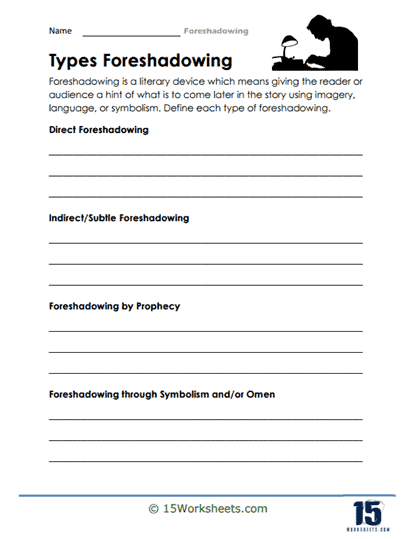Defining The Types

Worksheet Description
The provided worksheet is an educational tool designed to help students understand and identify different types of foreshadowing in literature. Foreshadowing is a critical literary device that authors use to give readers or the audience a hint of what is to unfold later in the narrative. This particular worksheet divides foreshadowing into four distinct types: Direct Foreshadowing, Indirect/Subtle Foreshadowing, Foreshadowing by Prophecy, and Foreshadowing through Symbolism and/or Omen.
For Direct Foreshadowing, students are expected to define and provide examples where the text clearly indicates or suggests what will happen later in the story, without subtlety. Indirect/Subtle Foreshadowing is less obvious and requires readers to be more analytical and attentive to understated hints or clues. Foreshadowing by Prophecy involves predictions, often from a character within the story, that directly or indirectly suggest future events. Lastly, Foreshadowing through Symbolism and/or Omen requires recognition of symbols or events that traditionally signal certain outcomes, like a black cat crossing one’s path as an omen of bad luck.
By completing this worksheet, students can practice their analytical reading skills, learning to pick up on and interpret the clues that writers leave to build anticipation and deepen narrative complexity. This worksheet serves as a guide for students to systematically approach the study of foreshadowing, enhancing their comprehension and appreciation of this literary technique.
